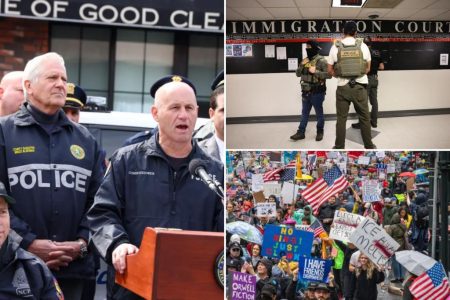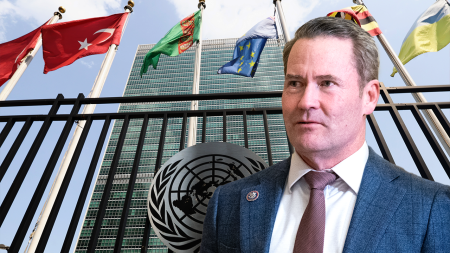In an unprecedented legal maneuver, two death row inmates, Shannon Agofsky and Len Davis, have challenged President Biden’s commutation of their sentences to life imprisonment without parole. Both men, incarcerated at the US Penitentiary in Terre Haute, Indiana, were among 37 federal death row inmates granted clemency by the President last month. This act of clemency, intended to spare their lives, has been met with resistance as Agofsky and Davis argue that accepting the commutation would jeopardize their ongoing appeals and hinder their efforts to prove their innocence. They have filed emergency motions in federal court, seeking to retain their death sentences and the legal advantages they believe come with them. This unusual situation raises complex legal questions about the rights of condemned prisoners and the scope of presidential clemency powers.
Agofsky’s and Davis’s central argument revolves around the concept of “heightened scrutiny,” a legal principle applied to death penalty cases that mandates a more rigorous review process for potential errors. They contend that by commuting their sentences, President Biden inadvertently strips them of this crucial protection, potentially weakening their chances of successfully appealing their convictions. Agofsky’s filing explicitly states that commutation during active litigation removes the heightened scrutiny safeguard, creating an unfair disadvantage and undermining his appellate procedures. Davis similarly argues that his death sentence provides a platform to highlight alleged misconduct by the Justice Department, a claim he believes would lose traction with a commuted sentence. Both men believe that maintaining their death row status, despite the immediate threat to their lives, offers a stronger legal footing for their appeals.
While Agofsky and Davis believe their legal strategy is sound, existing case law suggests otherwise. A 1927 Supreme Court ruling established that a convict’s consent is not required for a presidential pardon or commutation. This precedent significantly weakens their argument, indicating that the President has the authority to grant clemency regardless of the inmate’s wishes. However, the unique circumstances of this case – where inmates are actively rejecting clemency to preserve perceived legal advantages – present a novel legal challenge that has yet to be fully addressed by the courts. The clash between presidential power and the inmates’ desire to control their legal strategies creates a complex legal puzzle with potentially far-reaching implications.
Agofsky’s history reveals a complex legal trajectory. Initially serving a life sentence for a 1989 bank president murder and robbery, he was subsequently sentenced to death in 2004 for stomping a fellow inmate to death in 2001. He maintains his innocence in both cases. His refusal to sign the commutation paperwork underscores his determination to pursue appeals, even at the risk of execution. His wife, Laura Agofsky, articulated his motivation, stating that he refuses to die in prison branded a “cold-blooded killer.” Agofsky’s stance highlights the profound impact of societal labels on convicted individuals and their families, even within the confines of the criminal justice system.
Davis’s case presents a different narrative. A former New Orleans police officer, he was convicted in 1994 of hiring a hitman to murder Kim Groves, who had filed a complaint against him. Like Agofsky, Davis proclaims his innocence and challenges the jurisdiction of the federal court that convicted him. His argument, that the death sentence draws attention to the alleged Justice Department misconduct, suggests a belief in the power of his case to expose systemic flaws. He views his remaining on death row as a necessary component of his fight for vindication and a means to bring alleged corruption to light.
The cases of Agofsky and Davis stand out against the backdrop of President Biden’s broader clemency initiative. While the President commuted the sentences of 37 federal death row inmates, including individuals convicted of heinous crimes such as child murder and mass shootings, several notorious figures were excluded. Dzhokhar Tsarnaev, the Boston Marathon bomber; Robert Bowers, the Pittsburgh synagogue shooter; and Dylann Roof, the Charleston church shooter, all remain on death row, their sentences untouched by the President’s clemency. This distinction underscores the complexity and selectivity of the clemency process, highlighting the ongoing debate surrounding capital punishment and the factors considered when granting or denying such reprieves. The contrasting fates of these inmates further emphasize the unique legal battle waged by Agofsky and Davis, who are fighting not for their lives, but for the right to maintain the legal avenue they believe offers the best chance to clear their names.










